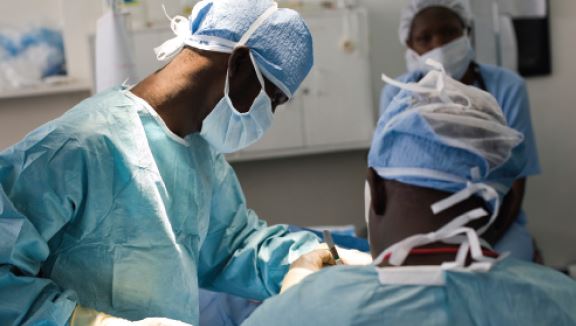Doctors treating Lassa fever patient | File photo
The Nigeria Centre for Disease Control and Prevention (NCDC) has implored state governments to strengthen year-round community engagement to curb the spread of Lassa fever.
Lassa fever is a viral hemorrhagic disease transmitted primarily through contact with the urine or faeces of infected rats.
It can also spread from person to person through bodily fluids, contaminated objects, or infected medical equipment.
Symptoms include fever, sore throat, headache, vomiting, muscle pain, and in severe cases, bleeding from body openings.
Advertisement
In its latest situation report for epidemiological week 31, the agency confirmed nine new cases in Ondo, Edo and Taraba, up from three reported the previous week.
The NCDC said this brings the total confirmed cases to 836 across 21 states and 105 LGAs, with an 18.7 percent case fatality rate, higher than the 17.3 percent recorded in the same period in 2024.
The agency said the country has recorded 156 deaths from the disease in 2025.
Advertisement
According to the report, 90 percent of confirmed cases were recorded in Ondo (33 percent), Bauchi (23 percent), Edo (17 percent), Taraba (14 percent), and Ebonyi (3 percent).
It said that the most affected age group were 21–30 years, with more men than women infected.
The NCDC noted that no new healthcare worker infections occurred in the week under review.
However, it identified challenges including late presentation of cases, poor health-seeking behaviour due to high treatment costs, and poor environmental sanitation in high-burden communities.
Advertisement
To tackle the outbreak, the agency said it has deployed its rapid response teams and launched training and fellowship programmes.
The public health agency said that it has also integrated Lassa fever messages into broader risk communication efforts and distributed essential commodities such as ribavirin, personal protective equipment, and thermometers to affected states.
It urged healthcare workers to maintain high suspicion for Lassa fever and ensure timely referrals, while advising the public to improve sanitation and prevent rodent contact — which is the primary source of infection.
Advertisement










